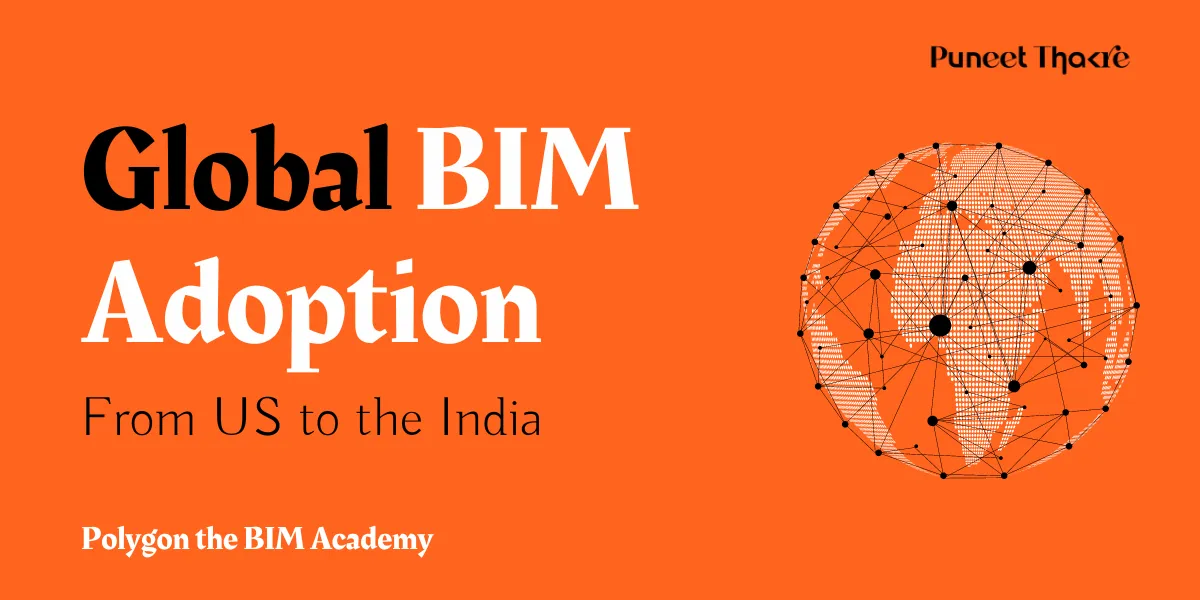#Global BIM Adoption
Hello there! Today, we're diving into an exciting journey around the globe to explore the adoption of Building Information Modeling (BIM), a transformative force reshaping the architecture, engineering, and construction (AEC) industries. Imagine us sitting in a cozy café, sipping our favorite drinks while discussing how BIM is making waves worldwide, from the skyscrapers of New York to the historical renovations in Rome.
The Starting Line: Understanding BIM
Before we jet off, let's quickly touch base on what BIM is all about. It's not just fancy 3D modeling; it's a process that gives professionals the tools to design, visualize, simulate, and manage buildings and infrastructure projects more efficiently. Now, with our bags packed with this knowledge, let's see how different parts of the world are embracing BIM.
North America: The Trailblazer
Starting in North America, the U.S. has been a frontrunner in BIM adoption. With initiatives like the General Services Administration (GSA) mandating BIM for federal building projects, it's clear why the U.S. is often seen as a benchmark. Here, BIM is not just about building; it's about innovating, optimizing building performance, and even facilitating maintenance post-construction.
Europe: The Standard Setter
Hopping across the pond to Europe, we find a region deeply committed to standardization and collaboration. The UK, for example, mandated BIM for all government-funded projects, setting a global precedent for BIM standards and processes. Meanwhile, Scandinavian countries, with their high regard for sustainability and efficiency, have seamlessly integrated BIM into their workflows, becoming models of BIM efficiency.
Asia: The Rapid Adopter
Now, let's fly over to Asia, where countries like Singapore and South Korea are making significant strides. Singapore, with its forward-thinking approach, has implemented BIM e-submission mandates, while South Korea's government has been aggressively promoting BIM, aiming to revolutionize its construction industry. These efforts have not only enhanced project efficiencies but have also catapulted these nations to the forefront of BIM adoption.
Middle East: The Visionary
Our next stop is the Middle East, where the skyline tells a story of ambition and innovation. Countries like the United Arab Emirates and Qatar are leveraging BIM to bring to life architectural marvels and smart city projects. BIM here is about vision—creating cities of the future that are sustainable, efficient, and awe-inspiring.
Latin America: The Emerging Force
Finally, let's touch down in Latin America, where BIM is still in its early stages but growing rapidly. Countries like Brazil and Chile are investing in BIM training and legislation, recognizing its potential to revolutionize their construction sectors. It's a region on the cusp of a BIM boom, aiming to bridge the gap with more developed BIM landscapes.
India: The Dynamic Innovator
As we make our way to India, we're greeted by a dynamic and diverse construction sector that's eagerly embracing BIM. India's adoption of BIM is driven by a unique blend of governmental push and private sector enthusiasm. The Indian government's ambitious initiatives, like the Smart Cities Mission, are catalysts for BIM adoption, aiming to transform urban landscapes through technology and innovation.
In the private sector, India's vast pool of engineering talent is pushing the boundaries of what BIM can achieve. Indian companies are not just adopting BIM; they're innovating within it, developing custom solutions and workflows that cater to the unique challenges of Indian construction projects. From sprawling infrastructure developments to high-rise buildings, BIM is becoming an integral part of India's architectural narrative.
The conversation around BIM in India is also incredibly vibrant, with numerous forums, workshops, and conferences dedicated to spreading BIM knowledge and best practices. This educational push is crucial, as it helps bridge the knowledge gap and prepares the next generation of architects, engineers, and builders to be BIM-fluent.
Overcoming Challenges
Despite the enthusiasm, India's journey with BIM is not without its challenges. The diversity in project types and the complexity of regulatory environments across states make standardization a tough nut to crack. Moreover, the initial investment in BIM technology and training is a hurdle for smaller firms. However, the tide is turning. With increasing awareness and the demonstrable benefits of BIM in reducing costs, enhancing efficiency, and improving project outcomes, more and more stakeholders are coming on board.
India's BIM Future
Looking ahead, India's future with BIM looks promising. With a young and tech-savvy population, a booming construction sector, and a strong emphasis on sustainable and smart development, India is poised to leapfrog into a leading position in the global BIM adoption race. The key will be in fostering collaboration between the government, private sector, and educational institutions to create a unified BIM ecosystem.
Wrapping up
As we conclude our global tour, India stands out as a testament to the transformative power of BIM, blending traditional construction techniques with modern technology to create a future that's not only built more efficiently but also more thoughtfully. The conversation around BIM in India is just getting started, and it's one that's filled with optimism, innovation, and the promise of a brighter, more sustainable future in construction.
And with that, our journey comes to a close. From the Americas to Asia, Europe, the Middle East, and back to India, it's clear that BIM is more than just a technological tool—it's a global movement, a new way of thinking that's bringing us closer to a future where buildings are not just structures, but stories of collaboration, innovation, and sustainability. Let's keep this conversation going, shall we? What's your perspective on India's BIM journey?





